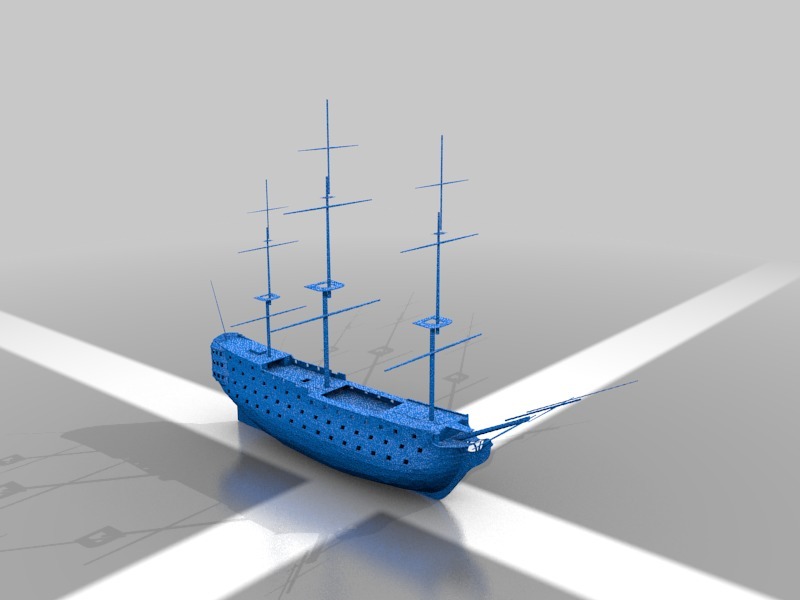
HMS Victory
thingiverse
HMS Victory is a 104-gun first-rate ship of the line for the Royal Navy, ordered in 1758, laid down in 1759 and launched in 1765. She is best known for her role as Lord Nelson's flagship at the Battle of Trafalgar on October 21, 1805. She also served as Keppel's flagship at Ushant, Howe's flagship at Cape Spartel and Jervis's flagship at Cape St Vincent. After 1824, she was relegated to harbor ship status. In 1922, she was moved to a dry dock in Portsmouth, England, and preserved as a museum ship. She has been the flagship of the First Sea Lord since October 2012 and is the world's oldest naval ship still in commission with 240 years of service by 2018. Construction In December 1758, Pitt the Elder ordered the construction of 12 ships, including a first-rate ship that would become HMS Victory. During the 18th century, Victory was one of ten first-rate ships to be constructed. The outline plans were based on HMS Royal George, which had been launched at Woolwich Dockyard in 1756. The naval architect chosen to design the ship was Sir Thomas Slade, who was also the Surveyor of the Navy at the time. She was designed to carry at least 100 guns. The commissioner of Chatham Dockyard was instructed to prepare a dry dock for the construction. The keel was laid on July 23, 1759, in the Old Single Dock (now known as Victory Dock), and a name, Victory, was chosen in October 1760. In 1759, Britain's land victories had been won at Quebec and Minden, and naval battles had been won at Lagos and Quiberon Bay. It was the Annus Mirabilis, or Year of Wonders, and the ship's name may have been chosen to commemorate these victories or simply because it was the only available name. A team of 150 workmen were assigned to the construction of Victory's frame. Around 6,000 trees were used in her construction, with 90% being oak and the remainder elm, pine, and fir, together with a small quantity of lignum vitae. The wood of the hull was held in place by six-foot copper bolts, supported by treenails for the smaller fittings. Once the ship's frame had been built, it was normal to cover it up and leave it for several months to allow the wood to dry out or "season". Work restarted in autumn 1763, and she was launched on May 7, 1765, having cost £63,176 and 3 shillings, equivalent to £7.92 million today. On the day of the launch, shipwright Hartly Larkin suddenly realized that the ship might not fit through the gates. He and his team removed enough wood from the gates with their adzes for the ship to pass safely through. The launch itself revealed significant challenges in the ship's design, including a distinct list to starboard and a tendency to sit heavily in the water. The first of these problems was rectified after launch by increasing the ship's ballast to settle her upright on the keel.
With this file you will be able to print HMS Victory with your 3D printer. Click on the button and save the file on your computer to work, edit or customize your design. You can also find more 3D designs for printers on HMS Victory.
